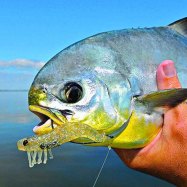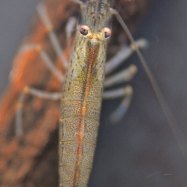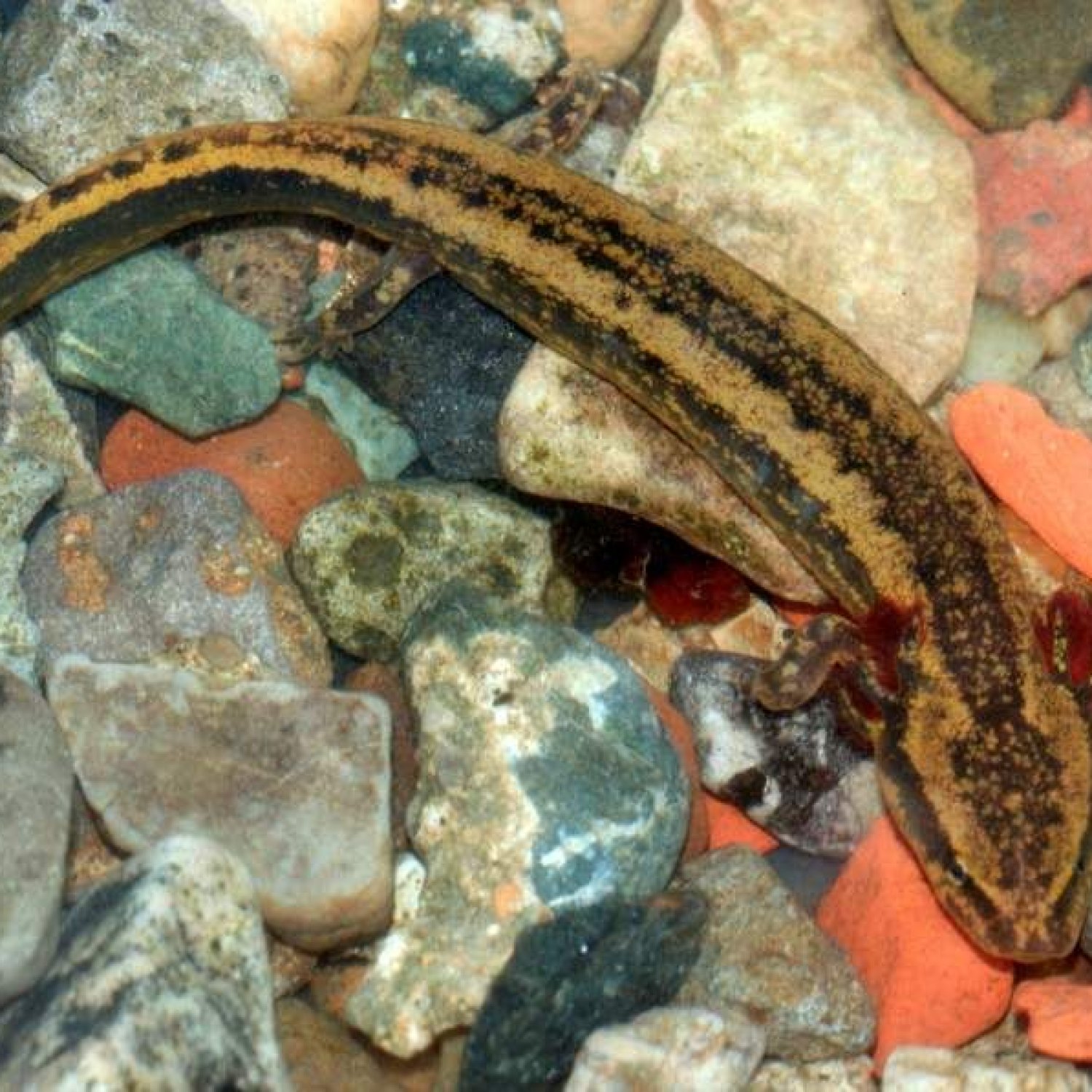
Mudpuppy
8 to 13 inches
Meet the Mudpuppy, a fascinating aquatic creature found in rivers, streams, and lakes. With a length of 8 to 13 inches, they have an elongated and slender body with a flattened head and tail. Belonging to the Proteidae family, these amphibians are also known as waterdogs or siren salamanders. Fascinate yourself by spotting these unique animals in their natural habitat. #Mudpuppy #AquaticLife #Proteidae
Animal Details Summary:
Common Name: Mudpuppy
Kingdom: Animalia
Habitat: Freshwater
The Mudpuppy: A Fascinating Amphibian of North America
When you think of amphibians, the first creatures that come to mind are usually frogs, toads, and salamanders. But there is one lesser-known amphibian that is equally intriguing and unique – the Mudpuppy.The Mudpuppy, also known as Necturus maculosus, is a species of salamander that is found exclusively in North America. These fascinating creatures are often mistaken for eels due to their elongated and slender bodies, but they are actually fully aquatic amphibians Mudpuppy.
In this article, we will explore the remarkable features and characteristics of the Mudpuppy, from its habitat and feeding habits to its physical appearance and behavior.
The Natural Habitat of the Mudpuppy
As their common name suggests, Mudpuppies are typically found in muddy or silty freshwater habitats such as rivers, streams, and lakes. These amphibians primarily live in the eastern and central regions of North America, particularly in the United States and Canada.One of the reasons why Mudpuppies are so well adapted to living in freshwater environments is their ability to breathe through their skin. They also possess external gills, which aid in absorbing oxygen from the water. This makes them unique among salamanders, as most species have internal gills that only work during the early stages of their lives.
The Appearance of the Mudpuppy
Mudpuppies have a distinct appearance compared to other amphibians. They have a dark brown or black body with yellowish or reddish spots, giving them a mottled appearance that helps them blend into their habitat.Their body shape is also quite unusual – their elongated and slender body is equipped with small legs and a flattened head and tail Mud Snake. This allows them to navigate through the water with ease, making them excellent swimmers.
On average, Mudpuppies can grow to be 8 to 13 inches in length, with females typically being larger than males.
The Carnivorous Diet of Mudpuppies
Mudpuppies are carnivorous creatures, which means they feed on other animals. They have a varied diet, and their meal choices depend on their size. Younger Mudpuppies usually feed on smaller prey such as insects, small crustaceans, and snails. As they grow, their diet also grows to include larger prey like fish, worms, and other aquatic invertebrates.What sets Mudpuppies apart from other amphibians is their feeding method. Instead of using their tongues to catch prey like frogs and toads, Mudpuppies have powerful jaws that can crush the shells of snails and crustaceans.
The Geography of the Mudpuppy
As mentioned earlier, Mudpuppies are native to North America, specifically in the United States and Canada. They can be found in various states, including Texas, Oklahoma, Iowa, Wisconsin, and Michigan. However, their population is most abundant in the Great Lakes and the Ohio River Basin.In recent years, there have been reports of Mudpuppies being found in other parts of the world, such as Europe and Japan. While there is no evidence of them establishing a population in these areas, it is believed that they may have been introduced through the pet trade.
The Behavior of the Mudpuppy
Mudpuppies are primarily nocturnal creatures, meaning they are most active at night. During the day, they can be found hiding under rocks or logs, or buried in the sediment at the bottom of their habitat.Their behavior is quite fascinating, as they are solitary and territorial creatures. Mudpuppies mark their territory through scent trail secretions, and they will defend it from any intruders, even if it means getting into physical altercations.
Another interesting behavior of Mudpuppies is their ability to regenerate body parts. Like most salamanders, Mudpuppies can regenerate lost limbs, as well as their external gills. This allows them to heal and recover from injuries quickly, making them resilient creatures.
The Threats to Mudpuppies and Their Conservation Status
Despite their unique features and fascinating behaviors, Mudpuppies are facing several threats in their natural habitat. The biggest threat to their population is habitat destruction, as freshwater habitats are often polluted and destroyed by human activities.Mudpuppies are also affected by climate change, as rising temperatures can impact the water quality and temperature in their habitat. This can lead to a decline in food sources and the death of Mudpuppies due to the inability to regulate their body temperature.
In some areas, Mudpuppies are also collected for the pet trade, although this practice is not as common as it used to be. All of these factors have resulted in a decline in Mudpuppy populations and have earned them a conservation status of "Least Concern" on the IUCN Red List.
Efforts are being made to conserve Mudpuppies and protect their natural habitats. Some states have enforced regulations to protect Mudpuppies from being collected and kept as pets, and conservation groups are working towards improving water quality and preserving their habitats.
The Role of Mudpuppies in the Ecosystem
Mudpuppies play an essential role in the ecosystem of freshwater habitats. Being carnivorous creatures, they help keep the population of their prey in check, preventing overpopulation and maintaining the balance of the ecosystem.Their presence also indicates the health and quality of the freshwater environment. As they are sensitive to pollution and changes in water quality, their absence can be an indicator of a declining ecosystem.
Mudpuppies are also an essential food source for other animals, such as larger fish, birds, and mammals. Their ability to regenerate body parts also means they can withstand predation and continue to contribute to the ecosystem.
In Conclusion
The Mudpuppy, also known as Necturus maculosus, is a unique and fascinating amphibian found in North America. With its distinctive appearance, nocturnal behavior, and role in the ecosystem, Mudpuppies are truly remarkable creatures. However, they also face threats to their population, highlighting the importance of conservation efforts to protect these creatures and their habitats.As we continue to learn more about Mudpuppies and their behaviors, it is crucial that we work towards preserving their natural habitat and ensure their survival for future generations to admire and learn from.

Mudpuppy
Animal Details Mudpuppy - Scientific Name: Necturus maculosus
- Category: Animals M
- Scientific Name: Necturus maculosus
- Common Name: Mudpuppy
- Kingdom: Animalia
- Phylum: Chordata
- Class: Amphibia
- Order: Caudata
- Family: Proteidae
- Habitat: Freshwater
- Feeding Method: Carnivorous
- Geographical Distribution: North America
- Country of Origin: United States and Canada
- Location: Rivers, streams, and lakes
- Animal Coloration: Dark brown or black with yellowish or reddish spots
- Body Shape: Elongated and slender body with a flattened head and tail
- Length: 8 to 13 inches
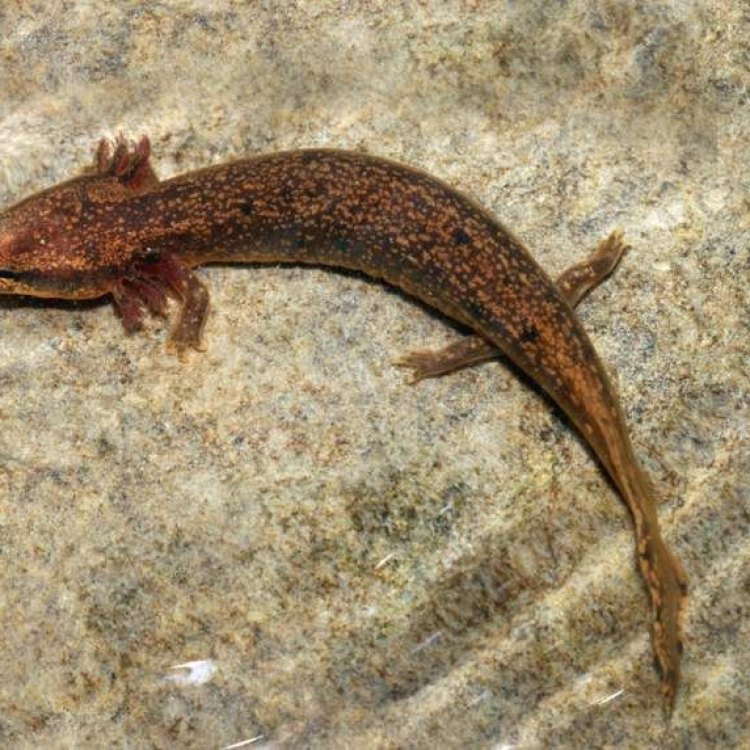
Mudpuppy
- Adult Size: 12 to 15 inches
- Average Lifespan: 10 to 20 years
- Reproduction: Sexual
- Reproductive Behavior: External fertilization
- Sound or Call: No vocalizations
- Migration Pattern: No regular migration
- Social Groups: Solitary
- Behavior: Mainly nocturnal and spend most of their time hiding under rocks or logs
- Threats: Habitat loss, pollution, and invasive species
- Conservation Status: Least Concern
- Impact on Ecosystem: Mudpuppies are an important species for maintaining a healthy aquatic ecosystem
- Human Use: Collected for scientific research and kept as pets
- Distinctive Features: External gills, four legs, and a tail fin
- Interesting Facts: Mudpuppies are the second-largest salamander species in North America. They are also known as waterdogs.
- Predator: Fish, birds, and larger salamanders

Necturus maculosus
The Mysterious Mudpuppy: The Salamander of Aquatic Ecosystems
When you think of salamanders, you may picture the small, slimy creatures creeping around on land. But have you heard of the mysterious mudpuppy? No, we're not talking about a canine that loves getting dirty. The mudpuppy is actually a large, aquatic salamander that can be found in North America.These fascinating creatures may not be as well-known as other aquatic animals like fish or turtles, but they play a crucial role in maintaining the health of our ecosystems PeaceOfAnimals.Com. Their unique features, interesting behavior, and important ecological impact make them a species worth learning more about.
Let's dive into the world of mudpuppies and discover what makes them such a fascinating and valuable part of our planet.
Size and Lifespan
The first thing you should know about mudpuppies is that they are not at all like the small salamanders you may be used to seeing on land. Mudpuppies are much larger, with adults reaching sizes of 12 to 15 inches. This makes them the second-largest salamander species in North America, only surpassed by the Pacific giant salamander.In addition to their size, mudpuppies also have a long lifespan compared to most other amphibians. While many salamanders live for only a few years, mudpuppies can live up to 20 years in the wild. This extended lifespan is due to their slow growth rate and their ability to adapt to a variety of environmental conditions.
Reproduction and Behavior
Mudpuppies have a unique reproductive behavior that sets them apart from other salamanders Mantella Frog. Unlike most amphibians, mudpuppies reproduce sexually through external fertilization. This means that the female lays eggs, and the male fertilizes them externally. The fertilized eggs are then left to develop on their own.During this process, mudpuppies exhibit interesting courtship behavior. The male will use his tail to nudge the female and guide her to a suitable spot to lay her eggs. They will also display a variety of courtship dances to attract a female mate.
Once the eggs are laid, the male does not play a role in caring for them. The female will hide the eggs in a safe location, and they will hatch after several weeks. The juvenile mudpuppies will then undergo metamorphosis, where they will develop gills that will eventually grow into their adult external gills.
Mudpuppies are mainly nocturnal creatures, meaning they are most active at night. They spend most of their time hiding under rocks or logs in the water. This behavior is primarily due to their sensitivity to sunlight, as they have no pigment in their skin to protect them from harmful UV rays.
Threats and Conservation Status
Like many other creatures in our world, mudpuppies are facing threats to their survival. The most significant threat to their population is habitat loss. The destruction of wetlands and pollution of our waterways have greatly impacted mudpuppies' ability to thrive in their natural environment.In addition to habitat loss, mudpuppies also face competition from invasive species. The introduction of non-native fish and other aquatic animals into their habitats can outcompete mudpuppies for food and space.
Despite these threats, the conservation status of mudpuppies is currently classified as Least Concern by the International Union for Conservation of Nature (IUCN). This is because mudpuppies have a widespread distribution and a stable population. However, continued conservation efforts are necessary to ensure their survival.
Impact on Ecosystems
One of the most important things to know about mudpuppies is their role in maintaining healthy aquatic ecosystems. As predators, mudpuppies help control the population of small fish and other aquatic animals. This prevents any one species from dominating and helps maintain a balanced ecosystem.Moreover, mudpuppies also serve as prey for larger animals like fish, birds, and other salamander species. This makes them a crucial part of the food chain, and their presence is essential for a thriving ecosystem.
Additionally, mudpuppies are indicators of water quality. As amphibians, they are highly sensitive to changes in their environment. Therefore, monitoring their populations and health can give us insight into the overall health of aquatic ecosystems.
Human Use and Distinctive Features
Mudpuppies have long been a subject of fascination for scientists and nature lovers. They have been collected for scientific research, providing us with valuable information about their behavior, biology, and ecology. In fact, because of their unique reproductive behavior, mudpuppies have been studied extensively to understand the evolution of external fertilization in amphibians.Aside from scientific interest, mudpuppies are also kept as pets by some people. However, as with all wild animals, it is crucial to understand the proper care and responsibility that comes with owning a mudpuppy. They require specialized equipment and a suitable environment to thrive, so it is essential to do thorough research before considering one as a pet.
One of the most distinctive features of mudpuppies is their external gills. While most salamanders lose their gills as they mature, mudpuppies keep theirs throughout their entire life, making them unique among amphibians. These gills allow them to breathe underwater, making them perfectly adapted for their aquatic lifestyle.
In addition to their external gills, mudpuppies also have four legs and a tail fin, making them excellent swimmers. These adaptations make them well-suited for their role as predators and enable them to hide and move efficiently in their aquatic environment.
Interesting Facts
Here are a few more interesting facts about mudpuppies:- Mudpuppies are also known as "waterdogs" due to their resemblance to small dog-like creatures.
- Despite their name, mudpuppies are not actually puppies, nor do they have anything to do with mud. They are fully aquatic salamanders.
- Mudpuppies have no vocalizations and do not make any sounds.
- Unlike many other amphibians, mudpuppies do not have a larval stage. They hatch from their eggs as fully formed juveniles.
In Conclusion
Mudpuppies may not be the most well-known or glamorous creatures in our aquatic ecosystems, but they play a crucial role in maintaining their balance and health. From their fascinating reproductive behavior to their unique adaptations for an aquatic lifestyle, mudpuppies are a truly remarkable species.However, mudpuppies face various threats to their survival, making it essential to continue conservation efforts and raise awareness about these mysterious creatures. Next time you come across a pond or stream, take a moment to appreciate the potential presence of these underwater salamanders and their significant impact on our environment.
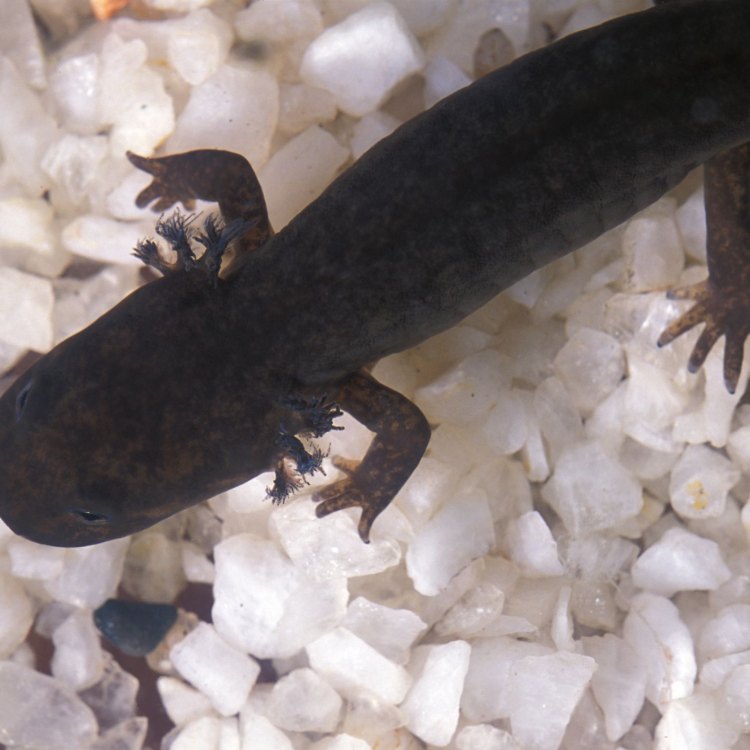
The Mudpuppy: A Fascinating Amphibian of North America
Disclaimer: The content provided is for informational purposes only. We cannot guarantee the accuracy of the information on this page 100%. All information provided here may change without prior notice.









